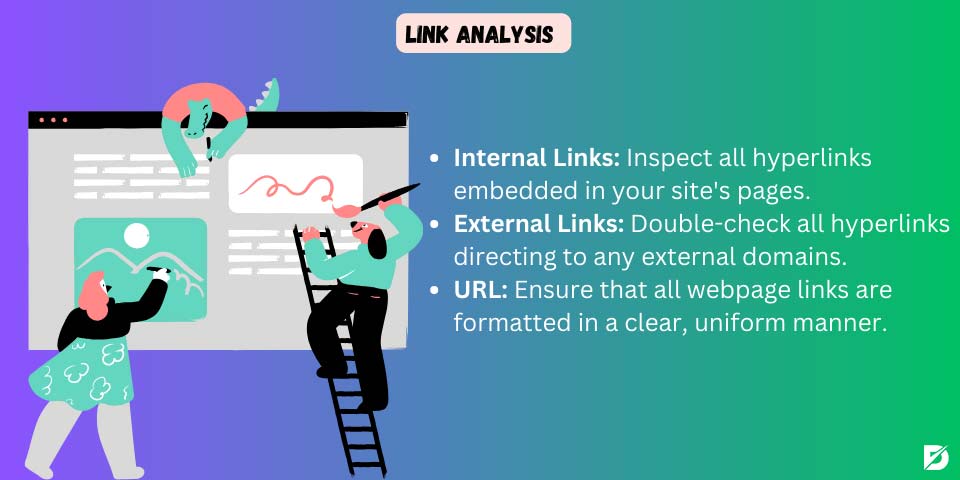Nowadays, everything is done over the Internet. Many business lines have moved to the Internet. While people spend so much time online, it has become inevitable for trade and other services to be on the Internet. Therefore, having a website has become one of the most basic needs. Creating a website is easier than it seems. Creating a website is quite easy with the help of various tools and services. In our article, we explained the website checklist methods before launching a website in detail and step by step.
Website Checklist
When it comes to launching a website, there are many things that need to be considered and checked off before it can go live. From design and functionality to SEO and security, numerous elements contribute to a website’s success. As such, having a comprehensive checklist is essential to ensure that everything is in place for a smooth and successful launch. Let’s now examine those essentials in detail.
- Browser Analytics
- Link Analysis
- Speed Analysis
- Device Analysis
- SEO Analysis
- Content Analysis
- Create an Opening Calendar
- Check for Index Errors
- Design and Layout
- Internal Linking
- Images
- Activate Site Search
- Check the SSL Certificate Validity
- Page Testing
- Page Speed
- Robots.txt File
- Check UX
- Social Media
- Set a Launch Date
- Launch Your Site
Browser Analytics
Websites are ultimately software that runs in browsers. Therefore, your website needs to work in a way compatible with the browsers your customers use. Slow opening, non-working features, and inaccessible pages are common browser errors. Some websites are compatible with popular browsers such as Google Chrome and Microsoft but may not be compatible with other browsers. Therefore, your website should be compatible with all browsers.
However, it should be noted that some website animation features do not work in some browsers. This is not a bug. You may want to use an animation that browsers do not support. At this point, you should add animations and features that can work with every browser on your website before the website launch.

Link Analysis
You should check that all links and buttons on your website are not working. Make sure you enter the correct URL for the links that are not working site launch.
- Internal Links: Check all internal links within your website. Ensure that navigation menus and footer links lead to the correct pages. Verify that links in blog posts, articles, or any other content are working.
- External Links: Review all outbound links to external websites. Confirm that external links open in new tabs/windows if necessary. Ensure the relevance and credibility of linked external content. Learn more about internal and external links.
- URL: Make sure that all URLs follow a consistent and clean structure. Avoid special characters and spaces in URLs.
And, for broken links, use online tools or plugins to scan for broken links and fix them for you. This means making sure that when people click on a link, it takes them to the right place.
Speed Analysis
You should run speed tests on your website. No one likes websites that are slow to open or slow to navigate. This can lead to serious traffic losses. That’s why you have to do a speed test of your website launch. You can use Dopinger’s website speed test tool for free!
Device Analysis
Testing your website to see if it is compatible with all devices is important. We now know that 80% of website traffic consists of mobile users. Therefore, the most important point you should pay attention to is to test whether your website is compatible with phone screen sizes. A mobile-friendly test tool may come in handy.
SEO Analysis
SEO Analysis allows you to analyze your site according to factors such as proper On-Site and Off-Site SEO, good site structure, good user experience, and SEO-friendly theme.
You can use our SEO Analyzer tool to perform SEO analysis. This tool allows you to perform an in-depth site review without any hassle and extremely quickly. To use the tool, simply enter the full URL of your site into the tool. Implement proper meta tags (title, description, keywords) on all pages. Set up and submit a sitemap to search engines. Ensure URLs are SEO-friendly and use descriptive keywords. Check for duplicate content issues. That is one of the most essential things to do in the website checklists.
Content Analysis
When you make a new website launch, one of the most important issues is content analysis. At the point of content analysis, you should create all the content on your website according to the language rules in which it is written. Also, pay attention to whether these texts are related to your business or the website’s subject. Check for spelling and grammar errors. Ensure all text is formatted correctly. Verify that all images and multimedia elements are optimized for web use. Confirm that all content is up-to-date and accurate.
Create an Opening Calendar
It’s a good idea to try to work to a calendar before the site launch, but if you set a deadline, you can get into a lot of trouble. On the other hand, if you work on a calendar, you can get things done more easily. When you work on a calendar, you may constantly encounter new problems.
Check for Index Errors
If any pages on your site are not being indexed, you can immediately check your Search Console account and review your URL addresses. If Search Console is not enough, you can try using other free or paid tools that can help you with this. Do not forget to see the checklist for website launch.

Design and Layout
Test the website’s responsiveness on different devices (desktop, tablet, mobile). Validate the design consistency across all pages. Confirm that all links and buttons are working correctly. Verify that the navigation is intuitive and user-friendly. Ensure the website looks professional and aligns with your brand.
Internal Linking
Search engines operate by first exploring a website, starting from its main page. They follow links to find and save information from other pages on the same site during the crawling and indexing process.
Internal links are very useful in this process by showing search engines which pages are important to the site. Another reason why internal linking is important is its impact on page ranking and the distribution of the link network from one page to another.
Images
The alt tags of your images should also be linked to your content and contain target words be careful using the website checklist ahead of time. Make sure your pictures are just right before your website goes live. This helps your site load quickly, look good, and give people a positive experience. Here are some tips to check;
- Image Quality
- Image Formats
- Image Dimensions
- Alt Text Image
- Loading Speed
- Image File Names
- Image File Types
Activate Site Search
When implementing site search functionality, the query parameter in the URL is often used to pass the search query to the server. In many cases, the query parameter is named differently based on the content management system (CMS) or the custom implementation. Check the best CMS here.
For instance, this URL: https://www.example.com is the base URL of the website. /search is the path or endpoint dedicated to handling search queries. s=query is the query parameter, where “query” is the actual search term.
Check the SSL Certificate Validity
Checking the SSL before the site launch certificate is a fundamental aspect of maintaining a secure and trustworthy online environment. It helps protect user data, verifies the identity of the website, and ensures compliance with security best practices.
Page Testing
Page testing before launching a website is a crucial step to ensure that your website functions properly, provides a positive user experience, and is free of errors. By systematically testing each page before the website launch, you can identify and address any issues, ensuring a smooth and error-free user experience for your visitors.
Page Speed
The speed of your website determines the likelihood of users taking the desired action on your website. Therefore, understanding the importance of how to optimize website speed is extremely important as it can lead to poor user experience and Google considers website speed as one of the ranking factors. Learn more about page speed and SEO relations.
Robots.txt File
The robots.txt file is like a guide for web robots. It tells them which parts of your website they can or can’t check. This helps search engines go through your site correctly and display your stuff in search results. To see this file, just add “/robots.txt” to the end of your website’s address.

Check UX
The user experience on your website covers everything that users interact with. For instance, if someone tries to buy something, but the “add to cart” button doesn’t work, that creates a bad user experience. See the factors below before the site launch.
- Make sure all the clickable things on your site work and take users to the right place.
- Use plenty of white space on pages with a lot of text to make them easy to read.
- Put important pages, like your contact page, in your navigation bar so visitors can quickly find them.
Social Media
Before launching the website, take time to create social media posts. This will help build excitement and give your audience an idea of what’s coming. Make content for before, during, and after the launch. This way, you can get people excited about your launch and remind them about your new site even if they miss the announcement on the launch day.
Set a Launch Date
Choose a specific launch date after identifying the tasks needed before the launch. Aim for a timeframe of at least one month. Many agencies typically allocate two to three months for activities such as research, design, and development leading up to the launch.
Launch Your Site
This checklist for the website will help make launching your website easy and simple. Starting your website is a big step. After you launch, it’s important to keep taking care of it and making it better over time. Best of luck with your website launch. Furthermore, Keep an eye on your website’s performance after launch to address any immediate issues.
Benefits of Checking the Checklist Before Launch
Before launching a new website, there is a comprehensive list of tasks and considerations that website developers, designers, and business owners should address before making their website publicly accessible. The goal of this checklist is to ensure that the website is well prepared, both technically and strategically, for a successful launch.
Frequently Asked Questions About
After you’ve created a website on your computer, the next step is to launch it. This means making it accessible on the Internet before you share it with everyone.
You can make a website first before putting it on the Internet. Many people create and test their websites locally or on a special server before making them live for everyone to see.
It’s important to include this in your website planning. Whether you’re updating the design or making sure the users have a good experience, check out our handy checklist for launching a website.





No comments to show.